Natural Beekeeping
- May 18, 2018
What the heck is “natural beekeeping”?! That’s what we said when we first started learning about bees. After our class at Shed in Healdsburg from Ariella Daly, we were sold! But let me back up…
Earlier this year, my husband, Martín, and I became intrigued with beekeeping. We knew nothing about it. Luckily our dear friends across the valley have a hive on their ranch and another in France (that’s been going for 30 years!). They loaned us a few books, and we started our learning quest.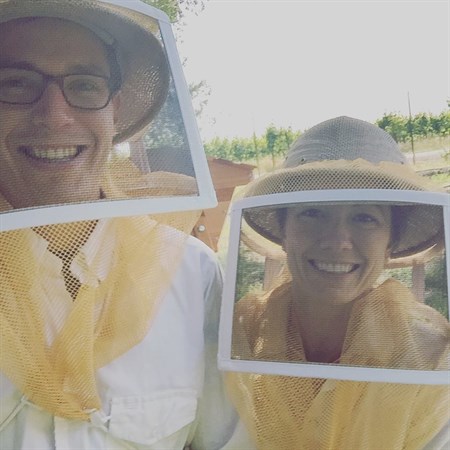
At the time, we were also planting a hedgerow at Hafner Vineyard between Sausal Creek and the vineyard to create a barrier in hopes of keeping bad insects (and hungry deer) from making their way into the rows of vines - attempting to battle nature with nature, instead of insecticides. Sarah/Mom is the expert gardener, so she and I crafted a list of plants that the bees would enjoy, such as salvias, borage and rudbeckia to name a few. Bees need a source of food – pollen and nectar from flowers.
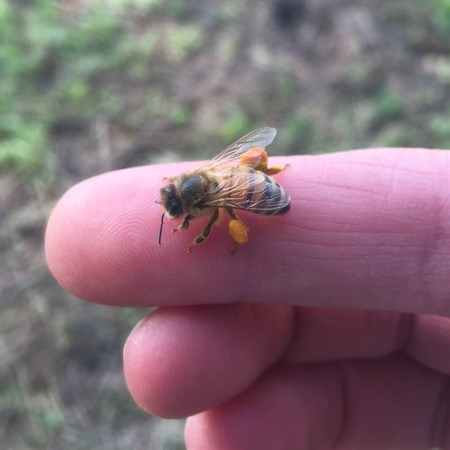 The yellow balls on her hind legs are pollen she has collected and is taking back to the hive.
The yellow balls on her hind legs are pollen she has collected and is taking back to the hive.
Martín and I then took a class at Shed in Healdsburg about natural beekeeping. We had no idea what to expect, but we were quickly captivated. Led by Ariella Daly, she explained the importance of natural beekeeping, which takes a “hands off” approach and allows the colony to live in a more holistic and independent manner. (Natural beekeeping is also called organic beekeeping or sustainable beekeeping.)
One big difference between conventional and natural beekeeping is the comb. Natural beekeeping allows the bees to build their own comb as they would in nature, instead of living in pre-built plastic comb. When the bees build their own comb, it allows them to create different cell sizes to fit their needs. With the plastic comb, often the cell sizes are “one size fits all” catering to the female bees that do all the work, but those cells do not accommodate for drones (the larger males). This can lead to an imbalance in the hive. Another reason to let bees build their own comb is they communicate through the vibration of their wings. Plastic disrupts this communication, while a bee’s wax comb resonates to the same frequency of their wings.
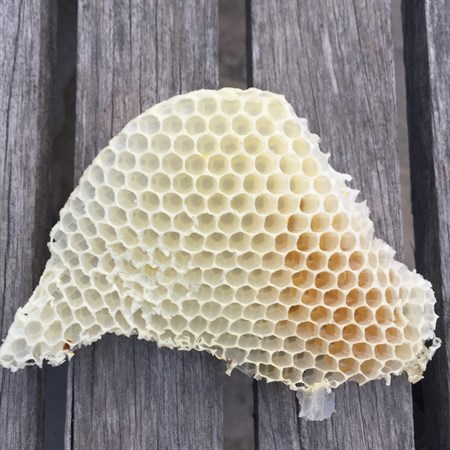 A small piece of comb the bees built which was removed because it was crossing bars.
A small piece of comb the bees built which was removed because it was crossing bars. 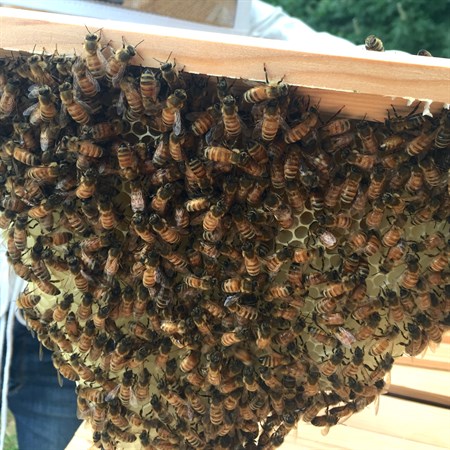
There are two hive styles for natural beekeeping: a warre box and a top-bar hive. We chose the latter. A top-bar hive emulates a hollow log in the forest, so it looks a bit like a trough with a top. It also seemed a bit easier to work with. We purchased our top-bar hive from Bee Built in Oregon because of their commitment to the environment. (To learn more about top-bar beekeeping, we’ve been reading Top-Bar Beekeeping, Organic Practices for Honeybee Health by Les Crowder. Check it out here.)
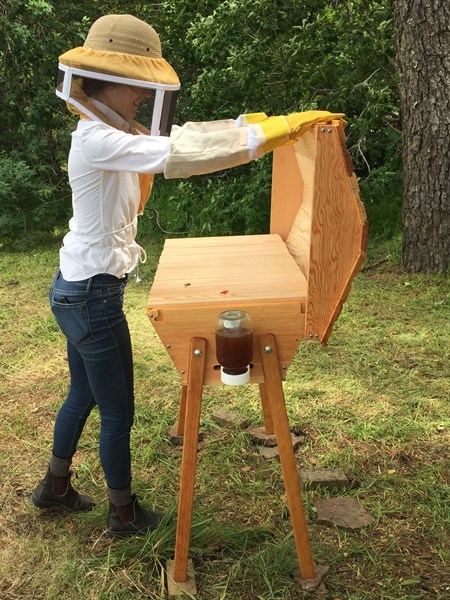
Ariella helped us “install” our bees from another local beekeeper in early April. Having to build their entire comb means that they need lots of energy, so we fed them honey and a biodynamic tea. They have been happily working away ever since.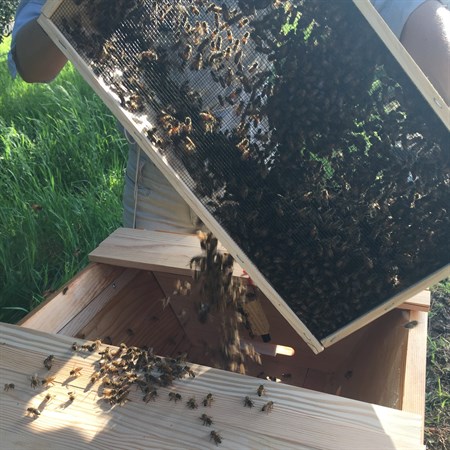
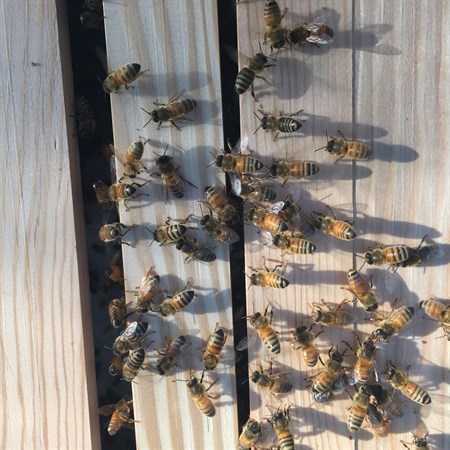
Martín and I have always enjoyed the outdoors, gardening and focusing on living our life with minimal impact to the environment. Our beekeeping goal is not honey production. In fact, a top-bar hive is notorious for producing less honey than other methods. Instead, we have the hive as another touchpoint to nature. We are fascinated by their community and our relationship with them. They teach us the importance of patience, relinquishing control and balance to our life. We are glad to be able to help a species that is under threat right now due to loss of habitat. They teach us to notice flowering patterns and the importance of planting pollinator gardens. They are a reminder that we share this land with other species, so we, humans, need to be aware of how our decisions impact other beings on the planet.
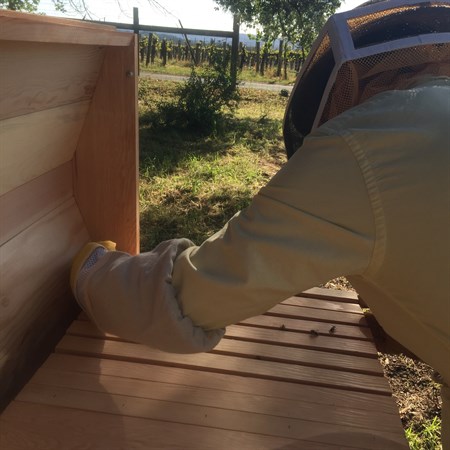 Martín slowly moves the bars to check on the hive and make sure the combs are not crossing.
Martín slowly moves the bars to check on the hive and make sure the combs are not crossing.
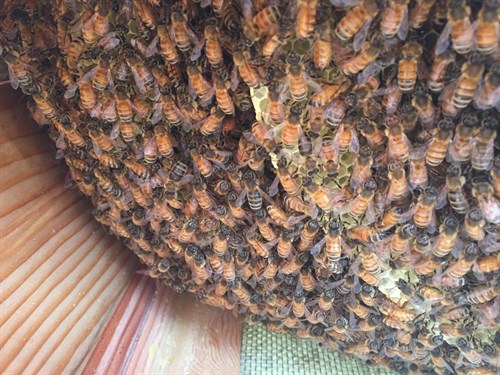 A view from the window into the hive as the bees are building their comb. You can see one of the panels of new comb, but the rest are covered by the bees.
A view from the window into the hive as the bees are building their comb. You can see one of the panels of new comb, but the rest are covered by the bees.
We'd love to keep in touch! Join our list here.



